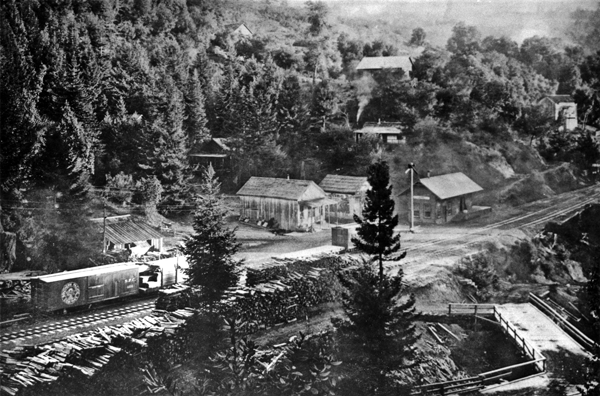A hidden glen on the northern fringe of Santa Cruz County, noted today only by a road sign on Laurel Curve off Highway 17, hides a tiny hamlet that once helped rebuild San Francisco in 1906.
Lightly settled during the early pioneering days of the 1850s, the town that became Laurel began as nothing more than the redwood-rich headwaters of Soquel Creek. Frederick A. Hihn gained the land in 1863 through a court settlement with Martina Castro. Naturally, he wanted to exploit its vast new timber reserves.
The coming of the South Pacific Coast Railroad in 1877 gave him that opportunity. He negotiated with the company to bring the tracks straight through his property.
Soon after the route opened in 1880, Highland, as the area was now called, became a small commercial village with a post office, school, general store, smithy, and lumber mill. When the Southern Pacific built its railroad station there in 1887, the village formally became Laurel.
For the next decade, Laurel sat peacefully above Soquel Creek with small industries such as oil prospecting and logging supporting the local railroad. Three roads branched out to connect the community to the outside world.
In 1899, Hihn moved his lumber operations to Laurel. An entire railroad system developed in the vale below the town, with cable pulleys hauling lumber-laden freight cars onto the railroad grade for transport out of the area. Because of the remoteness of the location, the mill employees lived locally on the hillside above the station. After the 1906 San Francisco Earthquake, Hihn’s mill supplied much of the redwood used to rebuild the city.
The mill changed ownership in 1909 and finished timber operations in 1913. Laurel became a quiet mountain village once again.
Unfortunately, without industry or nearby resorts to support it, the town quickly declined. The local freight office closed in 1920 with the general store and school closing a decade later.
The disastrous storm of 1940 ruined the right-of-way around Laurel and contributed to the railroad’s decision to close the line. The passenger office at the station closed in December 1941, ending the community’s stint as a railroad town. The post office was the last bit to close, shutting its doors in 1953.
– Derek Whaley is a local historian specializing in the railroading past of Santa Cruz County. For more information, visit his website at http://www.SantaCruzTrains.com.













